Welcome to Jizan, where you can find an abundance of birds that make this area their home. There are a variety of species, from raptors to sea birds, that can be found throughout the region.
With its diverse habitats, Jizan is home to a variety of birds, from the common to the rare, and the area provides a great opportunity to observe them in their natural habitat. Whether you’re a novice or an experienced bird watcher, there is something to be seen in Jizan.
1. Eurasian Spoonbill

The Eurasian spoonbill, scientifically known as Platalea leucorodia, is a species of wading bird belonging to the family Threskiornithidae. This species is also known as the common spoonbill and is a close relative of the ibis.
Eurasian spoonbills are found throughout much of Europe, Asia, and parts of Africa. They are very large birds, with a wingspan of up to 1.3 meters. They have a long, flat, spoon-shaped bill that is used for catching their prey.
Their diet consists of a wide variety of aquatic creatures such as crustaceans, fish, mollusks, and aquatic insects. These birds are mostly white with black flight feathers and yellowish legs.
The males tend to be slightly larger than the females. The Eurasian spoonbill typically breeds near wetlands and estuaries, and often nests in colonies of other wading birds.
During the breeding season, both parents participate in the incubation of the eggs and the raising of the young. They usually lay between two and five eggs which hatch after about three weeks.
The chicks are dependent on their parents for food for the first few weeks until they can feed themselves. The Eurasian spoonbill is currently listed as a species of least concern by the IUCN.
However, their population is decreasing due to habitat destruction and human disturbance. Conservation efforts to protect their habitats are therefore essential for the long-term survival of this species.
| Kingdom | Animalia |
| Phylum | Chordata |
| Class | Aves |
| Order | Pelecaniformes |
| Family | Threskiornithidae |
| Genus | Platalea |
| Species | P. leucorodia |
2. Lesser Sand Plover
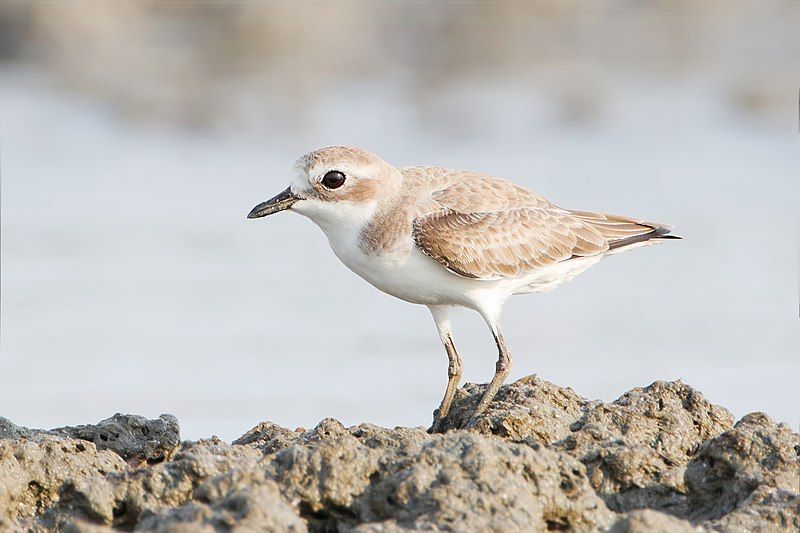
The Siberian sand plover is a species of bird belonging to the plover family. It is a small wader, typically found in the steppes and tundra of Siberia. The International Ornithologists’ Union recently made a significant change to the classification of the Siberian sand plover.
Previously, this species was classified as the lesser sand plover. However, the experts at the Union have now split the Tibetan sand plover from the lesser sand plover and changed its vernacular name to the Siberian sand plover.
This change reflects the fact that the Siberian sand plover is a distinct species from the lesser sand plover.
It is also important to note that the Siberian sand plover is only found in Siberia, while the lesser sand plover is found in a wider range of habitats, including parts of Asia, Africa, and Europe.
The new classification of the Siberian sand plover emphasizes the uniqueness of this species and the importance of protecting its habitat in Siberia.
| Kingdom | Animalia |
| Phylum | Chordata |
| Class | Aves |
| Order | Charadriiformes |
| Family | Charadriidae |
| Genus | Charadrius |
| Species | C. mongolus |
3. Black-winged Stilt
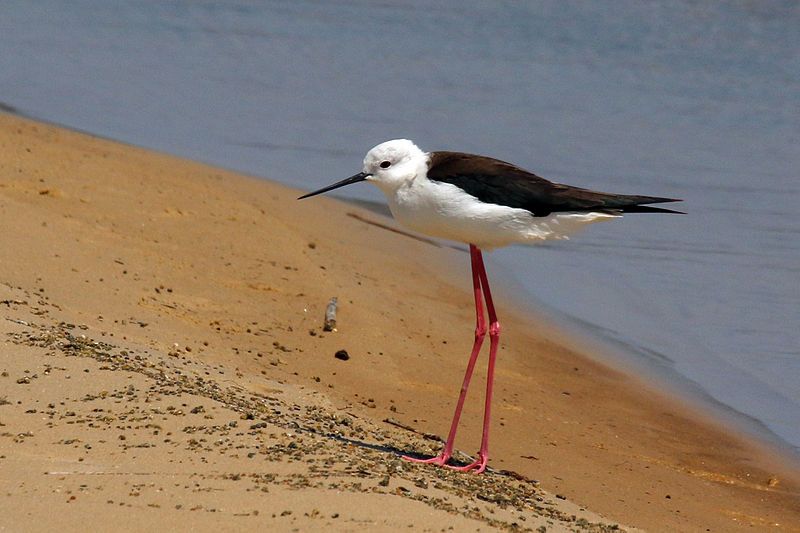
The black-winged stilt is a species of bird belonging to the avocet and stilt family and is found in many regions around the world. Known by its scientific name, H. himantopus, it is characterized by its very long legs and black wings.
It is a solitary species and rarely seen in large groups. The black-winged stilt is an adaptable species and can be found in many different habitats such as wetlands, coastal areas, and even urban areas.
It is an omnivore, and its diet consists of insects, crustaceans, mollusks, worms, and small fish. It also feeds on plant matter such as seeds and grains. The black-winged stilt is a medium-sized wading bird, with a wingspan of up to 40 inches.
Its long legs help it to wade in search of food, and it has a long neck and a long, straight bill for catching food. Its plumage is mostly white, with black wings and tail, and a light grey head.
The black-winged stilt is an important species in many wetlands and plays an important role in the local ecosystem.
It is listed as a species of least concern by the International Union for Conservation of Nature, and its population is believed to be stable.
| Kingdom | Animalia |
| Phylum | Chordata |
| Class | Aves |
| Order | Charadriiformes |
| Family | Recurvirostridae |
| Genus | Himantopus |
| Species | H. himantopus |
4. Crab-Plover
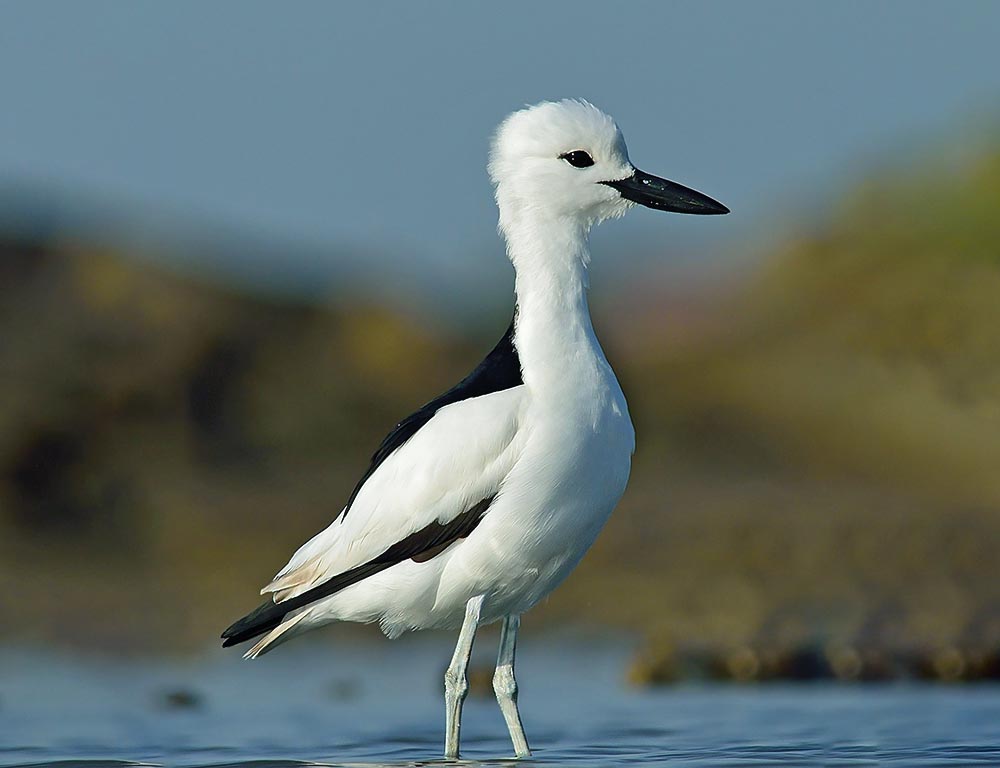
The crab-plover is a unique bird species that is related to the wader family but is so distinct that it has been given its own family, Dromadidae.
This species of bird can be found living in coastal regions of the Indian Ocean, the Red Sea, and the Persian Gulf, among other places. The crab-plover is a migratory species, meaning that it moves from one location to another depending on the season.
Its diet consists mainly of crabs and other invertebrates that it finds in the shallow waters of its coastal habitats. The crab-plover has unique plumage and an unusual appearance, including a black crest, white underparts, and a spotted breast.
It typically measures between 10 and 12 inches in length and weighs up to 8 ounces. Its long, thin legs and webbed feet make it well-suited for walking on mudflats.
The crab plover is an important part of the coastal ecosystem, and its presence helps to maintain a healthy balance of fish and invertebrates in the area.
| Kingdom | Animalia |
| Phylum | Chordata |
| Class | Aves |
| Order | Charadriiformes |
| Family | Dromadidae |
| Genus | Dromas |
| Species | D. ardeola |
5. Brown Booby
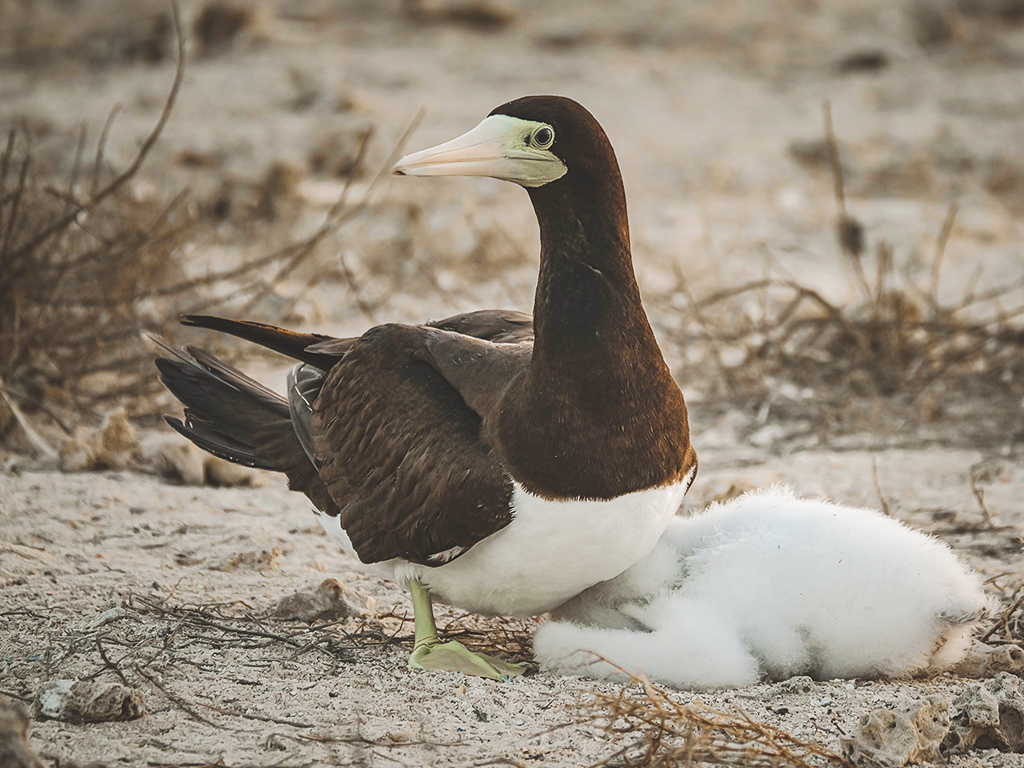
The brown booby is a large seabird belonging to the Sulidae family of boobies, of which it is the most widespread species. It can be found in tropical climates and its range overlaps with other species of booby.
This gregarious bird tends to travel and hunt for food in shallow waters, usually flying at a low altitude. The brown booby is a strong swimmer and has been observed to feed both on the surface and underneath the water.
It typically feeds on small fish but has also been known to eat squid and crustaceans. It is a colonial nester, meaning that it builds its nest in large colonies with other brown boobies.
The nests are usually built on islands and are made from twigs and leaves. The brown booby has an impressive wingspan of up to 2 meters, and its feathers are a pale brown color. Its face is white with a black patch around the eyes, and its bill is yellow with a darker tip.
It is a highly social species, and can often be seen in large flocks. In conclusion, the brown booby is a large and widespread seabird that can be found in tropical climates. It is gregarious and feeds in shallow waters, and its nests can be found in large colonies on islands.
It has an impressive wingspan and distinctive markings and is a highly social species.
| Kingdom | Animalia |
| Phylum | Chordata |
| Class | Aves |
| Order | Suliformes |
| Family | Sulidae |
| Genus | Sula |
| Species | S. leucogaster |
6. Greater Flamingo
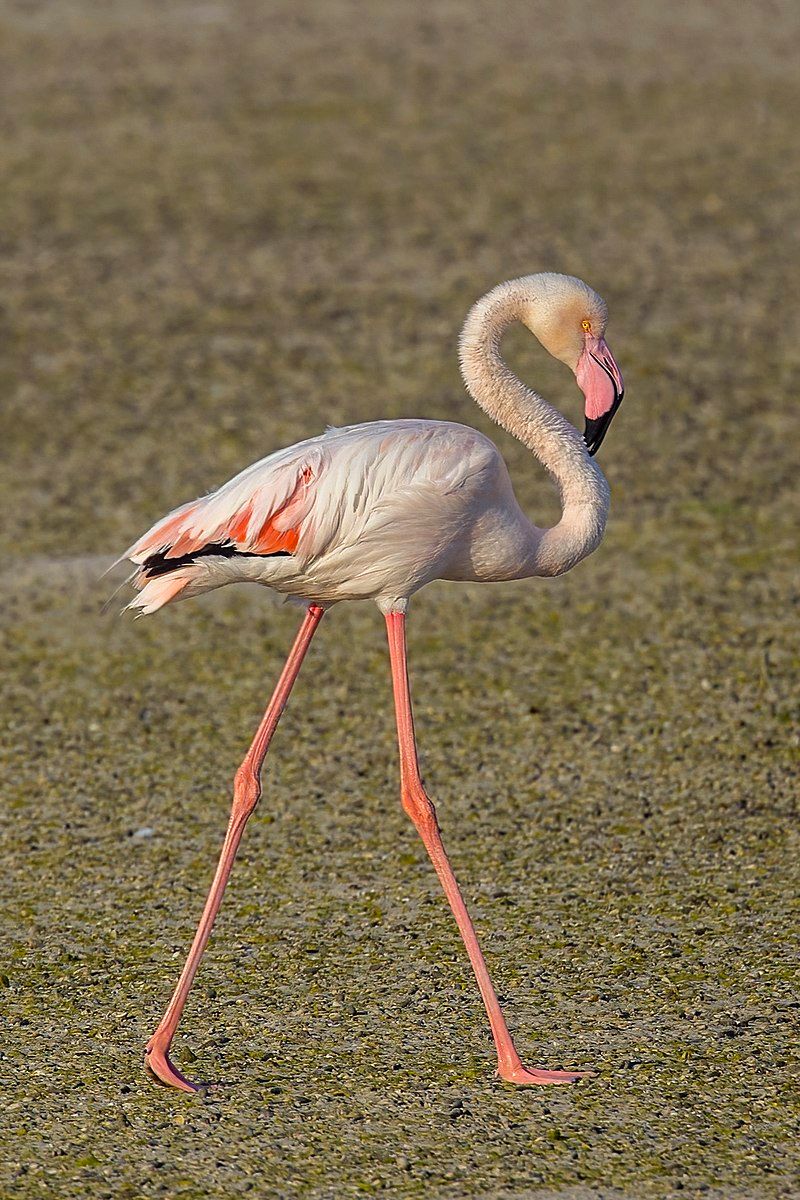
The greater flamingo is a majestic species of bird belonging to the flamingo family. It is the most widespread and largest species of the flamingo family and is found in many parts of the world.
The greater flamingo is common in the Old World and can be seen in Northern and Sub-Saharan Africa, the Indian Subcontinent, the Middle East, the Levant, the Persian Gulf, the Gulf of Aden, the Red Sea, and the Mediterranean countries of Southern Europe. These birds are usually seen in large flocks and are a spectacular sight to behold.
The greater flamingo’s diet mainly consists of small aquatic organisms, such as brine shrimp and blue-green algae. They also eat plankton, small fish, and other aquatic invertebrates.
The greater flamingo is an important species of bird and is often used as an indicator of the health of wetland ecosystems. The greater flamingo is an iconic species of bird, and its impressive range and size make it a sight to behold.
Its presence is an indication of the health of the environment, and its conservation is essential for the maintenance of healthy wetland ecosystems.
| Kingdom | Animalia |
| Phylum | Chordata |
| Class | Aves |
| Order | Phoenicopteriformes |
| Family | Phoenicopteridae |
| Genus | Phoenicopterus |
| Species | P. roseus |
7. Swifts
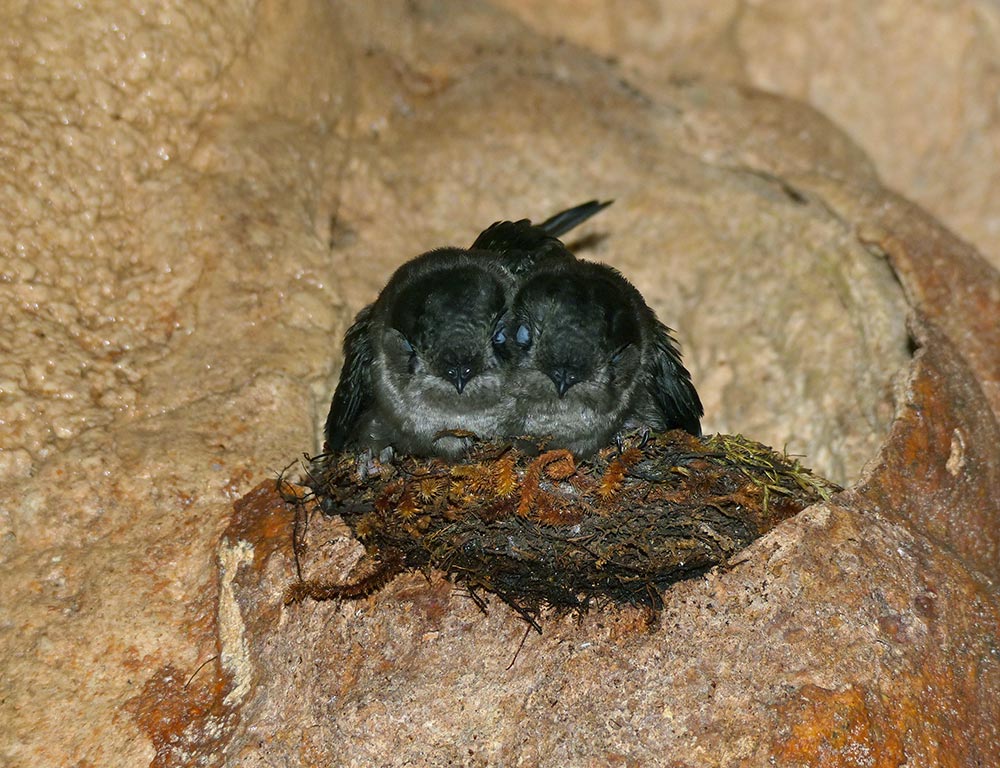
The swifts are a family of birds, Apodidae, that are adapted to live in the air. They have long, slender wings and a streamlined body, giving them the ability to fly quickly and for long distances.
They are similar in appearance to swallows, but they are not related to any type of passerine bird. Swifts are placed in the order of Apodiformes, along with hummingbirds, as they share many of the same characteristics.
Swifts typically feed on flying insects, which they catch on the wing, and they make a variety of high-pitched calls while in flight. They are well-known for their aerial acrobatics, which they can perform at high speeds and with great agility.
Swifts are found in most parts of the world, with different species being found in different habitats. They are an important part of many ecosystems, as they help to control insect populations.
| Kingdom | Animalia |
| Phylum | Chordata |
| Class | Aves |
| Clade | Strisores |
| Order | Apodiformes |
| Family | Apodidae |
8. Grey Plover
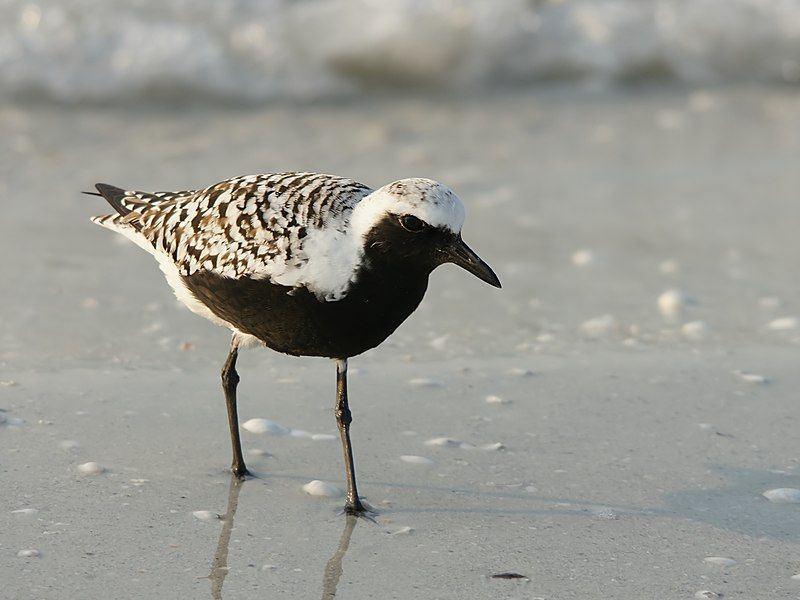
The grey plover is a species of large, cosmopolitan shorebird that breeds in the Arctic regions of the world. It is also known as the black-bellied plover in North America.
This species is a remarkable long-distance migrant, allowing it to have a nearly universal coastal distribution when it is not breeding. This means that it can be found on all coasts during certain times of the year.
During the breeding season, the plover migrates to Arctic regions to breed, and during the non-breeding season, it travels to all other coastlines of the world. This species has adapted to live in a wide variety of habitats, allowing it to thrive in many different regions.
It is an important species to many coastal ecosystems.
| Kingdom | Animalia |
| Phylum | Chordata |
| Class | Aves |
| Order | Charadriiformes |
| Family | Charadriidae |
| Genus | Pluvialis |
| Species | P. squatarola |
9. Sooty Gull
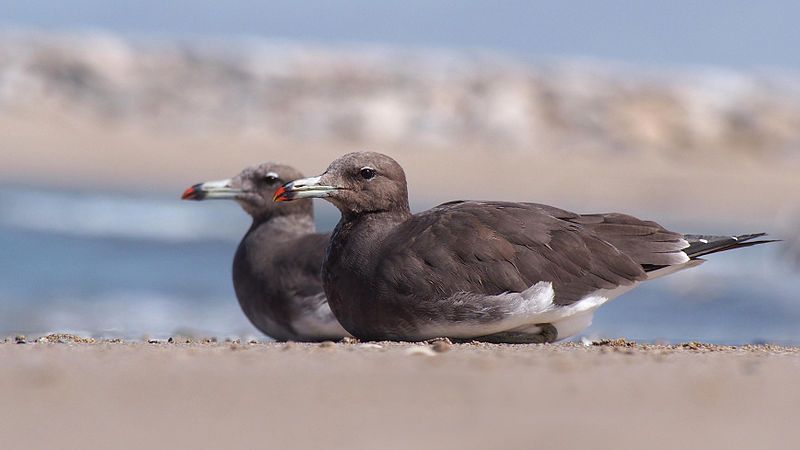
The sooty gull is a species of seabird that belongs to the family Laridae, which is commonly referred to as the “gulls”. It is also known as the Aden gull or Hemprich’s gull. The gulls are often found near bodies of water, such as the ocean, rivers, lakes, and ponds.
They are usually gray with black wings and a white head. The sooty gull is mainly found in the Indian Ocean, the Red Sea, and the Gulf of Aden. It is a medium-sized bird, with an average length of between sixteen and eighteen inches.
It has long, pointed wings and a short, black bill. Its legs and feet are also black. The head and underside of the wings are white, while the back and upper wing feathers are dark gray. The sooty gull feeds mainly on fish, but it will also eat crustaceans, mollusks, and insects.
It is considered to be of least concern on the IUCN Red List, which means it is not threatened by extinction. It is a gregarious bird, often found in large flocks.
It is an active flier and is often seen skimming over the sea surface in pursuit of food. Overall, the sooty gull is an interesting species of seabird, with its black-and-white coloration being quite eye-catching.
It is widely distributed throughout the Indian Ocean and the Gulf of Aden and is not considered to be threatened by extinction. It is an active flier and is often seen in large flocks, feeding on fish, crustaceans, mollusks, and insects.
| Kingdom | Animalia |
| Phylum | Chordata |
| Class | Aves |
| Order | Charadriiformes |
| Family | Laridae |
| Genus | Ichthyaetus |
| Species | I. hemprichii |
10. Greater Sand Plover
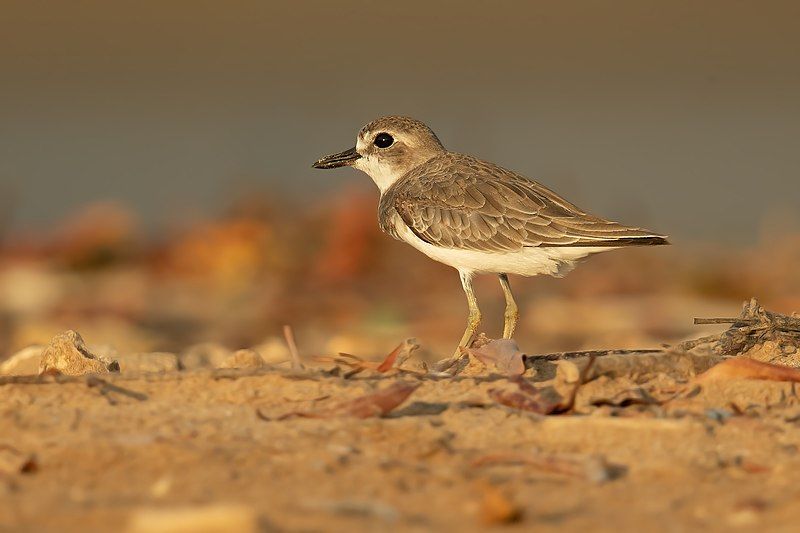
The Greater Sand Plover is a migratory shorebird that belongs to the Plover family. It is found in wetlands, coasts, and other habitats throughout the world. The spelling of its name is usually written as “greater sand plover” or “greater sand-plover”.
However, the official spelling as per the British Ornithologists’ Union is “Greater Sand Plover”. The species is a medium-sized wader, measuring 17-19 cm in length and weighing 40-60 g.
Its plumage is mainly grey-brown and it has a white forehead and chest, a dark cap, and a white throat. Males and females are similar in appearance. The Greater sand plover feeds on insects, crustaceans, mollusks, and other small invertebrates.
It is a gregarious species, often found in large flocks on coasts and estuaries. During the breeding season, it typically nests in large colonies on beaches and sand dunes. The species is threatened by habitat destruction, pollution, hunting, and egg collection.
It is also negatively impacted by climate change, as rising sea levels and extreme weather events are causing the loss of its preferred habitat.
| Kingdom | Animalia |
| Phylum | Chordata |
| Class | Aves |
| Order | Charadriiformes |
| Family | Charadriidae |
| Genus | Charadrius |
| Species | C. leschenaultii |
11. Swift Tern
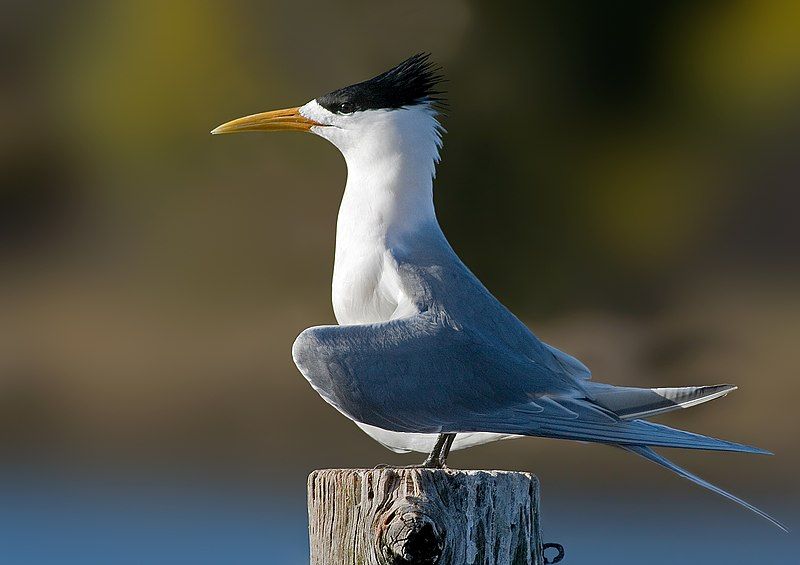
The greater crested tern is a species of seabird belonging to the family Laridae that is found in tropical and subtropical regions around the world. It is also referred to as the crested tern or swift tern.
This species is characterized by its white plumage, black cap, and yellow bill. The greater crested tern is highly social, and often nests in large colonies on coastlines and islands. It feeds primarily on small fish, which it captures both in the air and in the water.
During the breeding season, the greater crested tern can be found in large groups on beaches, where they perform a variety of courtship displays, such as chasing each other in circles and flying in formation.
The greater crested tern plays an important role in the local ecosystem, as it helps to control the population of small fish and is an important source of food for other species.
| Kingdom | Animalia |
| Phylum | Chordata |
| Class | Aves |
| Order | Charadriiformes |
| Family | Laridae |
| Genus | Thalasseus |
| Species | T. bergii |
12. Whimbrel
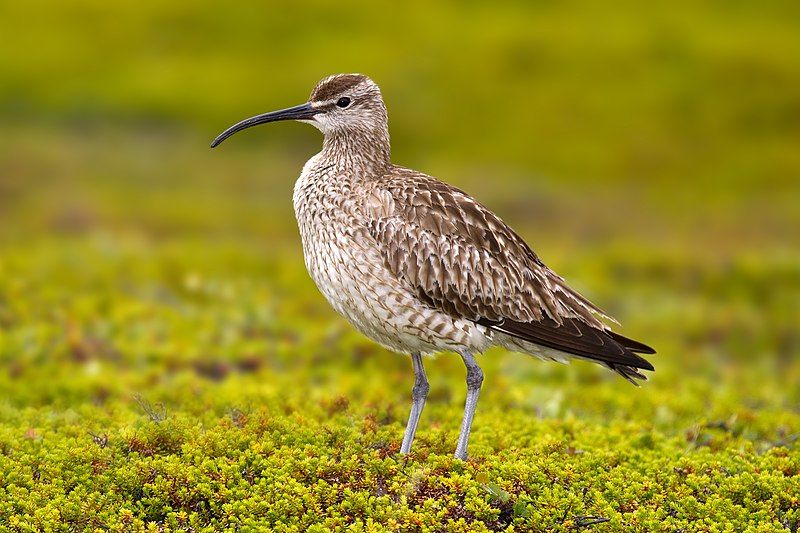
The Eurasian or Common Whimbrel is a type of bird that belongs to the large family Scolopacidae, which is commonly known as the Curlews. It is a wader, meaning that it typically forages or hunts for food in shallow water.
The Common Whimbrel is one of the most widespread of the Curlews, breeding across vast areas of subarctic Asia and Europe, and even as far south as Scotland. The bird is also known as the White-rumped Whimbrel in North America.
The Common Whimbrel is a medium-sized bird, with a brown-streaked body, long, slender bill, and white rump patch on its back. The bird’s legs are a greyish-green color, and its wings are a mottled grey-brown. Its head is a dark brown color, except for the white throat patch.
The Common Whimbrel generally breeds in northern areas, and winters in southern coastal areas, usually near the sea. The Common Whimbrel typically feeds on insects, worms, small mollusks, and small crustaceans.
It will also sometimes eat berries, grains, and other plant materials. The bird is also known to hunt in shallow water, often probing the mud with its long bill. During the breeding season, the Common Whimbrel will build its nest on the ground, usually close to water.
The female will lay two to four eggs, which are incubated for about three weeks. In conclusion, the Eurasian or Common Whimbrel is a type of bird in the large family Scolopacidae.
It is one of the most widespread of the Curlews, breeding across much of subarctic Asia and Europe, and even as far south as Scotland. The bird is easily identified by its brown-streaked body, long bill, and white rump patch.
It feeds on insects, worms, small mollusks, and other small animals, and builds its nest on the ground during the breeding season.
| Kingdom | Animalia |
| Phylum | Chordata |
| Class | Aves |
| Order | Charadriiformes |
| Family | Scolopacidae |
| Genus | Numenius |
| Species | N. phaeopus |
13. Bruce’s Green Pigeon
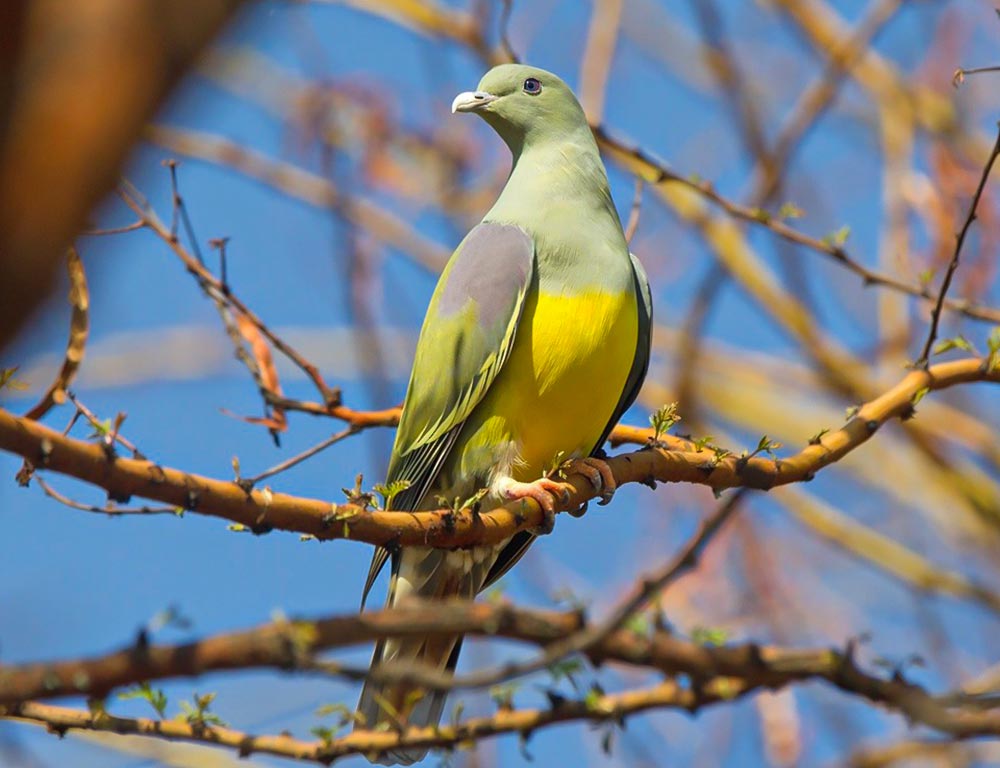
Bruce’s green pigeon is a species of bird that belongs to the family Columbidae, also known as the yellow-bellied fruit pigeon. It is native to the tropical rainforests of South East Asia and the Pacific Islands.
This species of bird is medium-sized and is typically a greenish color with yellow-tinged markings on its belly. It has a broad, rounded head and a short, slender bill. Its wings are broad and pointed, and the tail is long and rounded.
This species of bird feeds primarily on various types of fruits, such as apples, berries, and figs. During the breeding season, these birds form small flocks and inhabit areas with trees and shrubs.
They nest in small tree cavities and lay one to three white eggs, which they incubate for a period of two to three weeks. Bruce’s green pigeon is an important species to many tropical ecosystems due to its role as a seed disperser.
| Kingdom | Animalia |
| Phylum | Chordata |
| Class | Aves |
| Order | Columbiformes |
| Family | Columbidae |
| Genus | Treron |
| Species | T. waalia |
14. Arabian Babbler
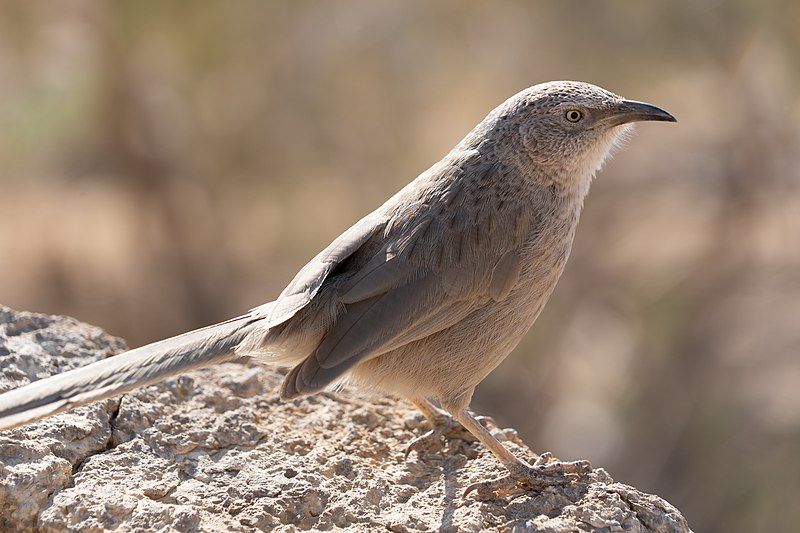
The Arabian babbler is a passerine bird, a type of perching bird in the taxonomic family of Old World sub-oscine passerines. It was recently placed in the genus Turdoides and is known for its communal nesting habits.
This bird is a resident species of arid scrublands in the Middle East and has a distinct social system within its groups. These groups are usually quite stable, and there is a strict order of rank within them.
The Arabian babbler is a cooperative breeder, which means that each group has a primary breeding pair and a number of helper birds that assist in raising the young.
These helpers are usually relatives of the breeding pair, and they play an important role in the survival of the species.
The Arabian babbler is an important part of the local ecosystem, as it helps to disperse the seeds of local plants and maintain the population of their prey species.
| Kingdom | Animalia |
| Phylum | Chordata |
| Class | Aves |
| Order | Passeriformes |
| Family | Leiothrichidae |
| Genus | Argya |
| Species | A. squamiceps |
15. Ruddy Turnstone
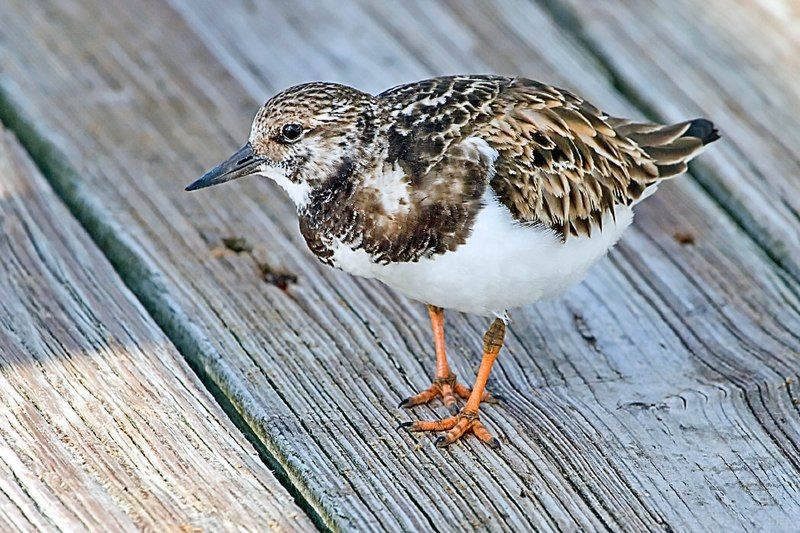
Turnstones are two species of birds that belong to the genus Arenaria in the family Scolopacidae. They are quite similar to calidrid sandpipers, and they could be considered to be part of the same group, known as the tribe Calidriini.
This family of birds is small and has a wide variety of characteristics that make them unique. For example, they have a strong sense of navigation, which aids them in finding food and in migrating between different habitats.
They can also be quite agile, as they can turn stones to uncover insects and other food sources beneath the surface. Furthermore, they have distinctively patterned plumage, which helps them to blend in with their environment.
All in all, turnstones are interesting birds that possess many special traits.
| Kingdom | Animalia |
| Phylum | Chordata |
| Class | Aves |
| Order | Charadriiformes |
| Family | Scolopacidae |
| Genus | Arenaria |
16. Caspian Tern
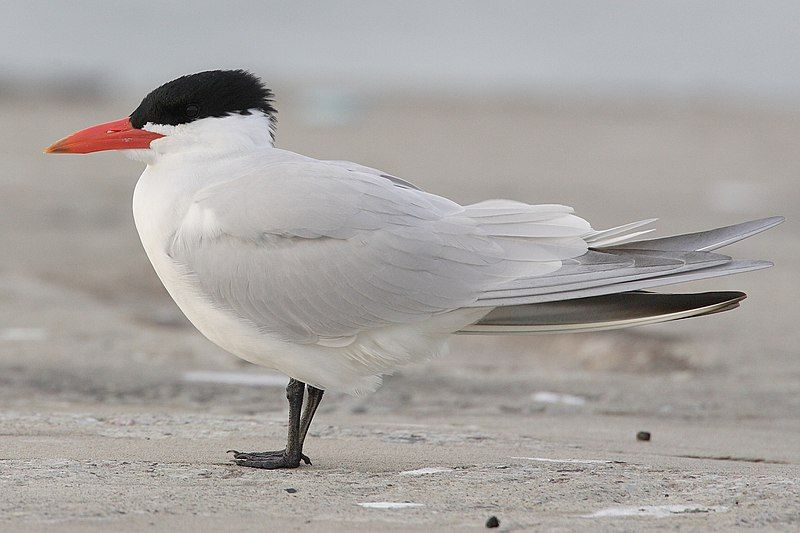
The Caspian tern is a species of tern that has a wide but scattered range across the world. It is the only species in its genus, and has no recognized subspecies.
The name of the genus, Hudroprogne, is derived from two Ancient Greek words – “hudros” meaning water and “progne” meaning swallow. This name is used to indicate the aquatic life of the Caspian tern, as it spends most of its time over coastal waters.
The Caspian tern is a large tern species, with a wingspan of up to 99 cm, and an overall length of up to 48 cm. The Caspian tern is a migratory bird, traveling to various parts of the world to breed and feed.
It is also an important part of the coastal ecosystem, as it feeds on a variety of fish, including anchovies, sardines, and smelt.
| Kingdom | Animalia |
| Phylum | Chordata |
| Class | Aves |
| Order | Charadriiformes |
| Family | Laridae |
| Genus | Hydroprogne |
| Species | H. caspia |
17. Arabian Woodpecker
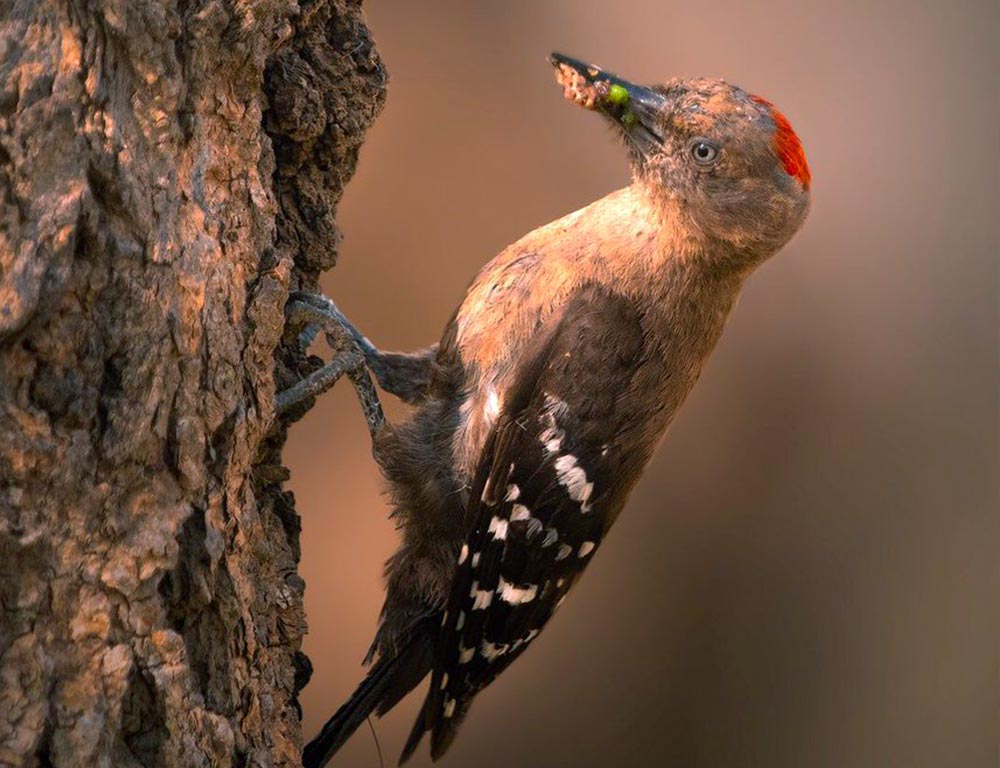
The Arabian woodpecker, also known as the Sarat woodpecker, is a species of bird that belongs to the family Picidae. It is native to the Sarawat Mountains of Saudi Arabia and Yemen, making it the only woodpecker which breeds on the Arabian Peninsula.
This species of woodpecker is quite rare and is only found in a few small areas, making it an important species to conserve.
Its habitat consists of cliffs and rocky slopes in the mountains, where it can feed on insects and larvae found in cracks and crevices of rocks. The Arabian woodpecker is a medium-sized species with a black body, white-tipped wings, and a large red crest.
Its plumage is mostly black with a white throat and breast, and its bill is black and chisel-shaped. The Arabian woodpecker has a distinctive call which is a loud, ringing “te-te-te”. They usually feed in small groups but can be seen alone as well.
They nest in holes in trees and can often be seen clambering up tree trunks or along branches in search of food. The Arabian woodpecker is an important species in the region, as it helps keep insect populations in check and provides food for other animals.
It is also an important indicator of the health of the local environment, as its presence suggests that the forests and mountains are healthy.
As a result, the conservation and protection of this species are essential, and efforts are being made to conserve its habitat and ensure its future survival.
| Kingdom | Animalia |
| Phylum | Chordata |
| Class | Aves |
| Order | Piciformes |
| Family | Picidae |
| Genus | Dendrocoptes |
| Species | D. dorae |
18. Red-eyed Dove
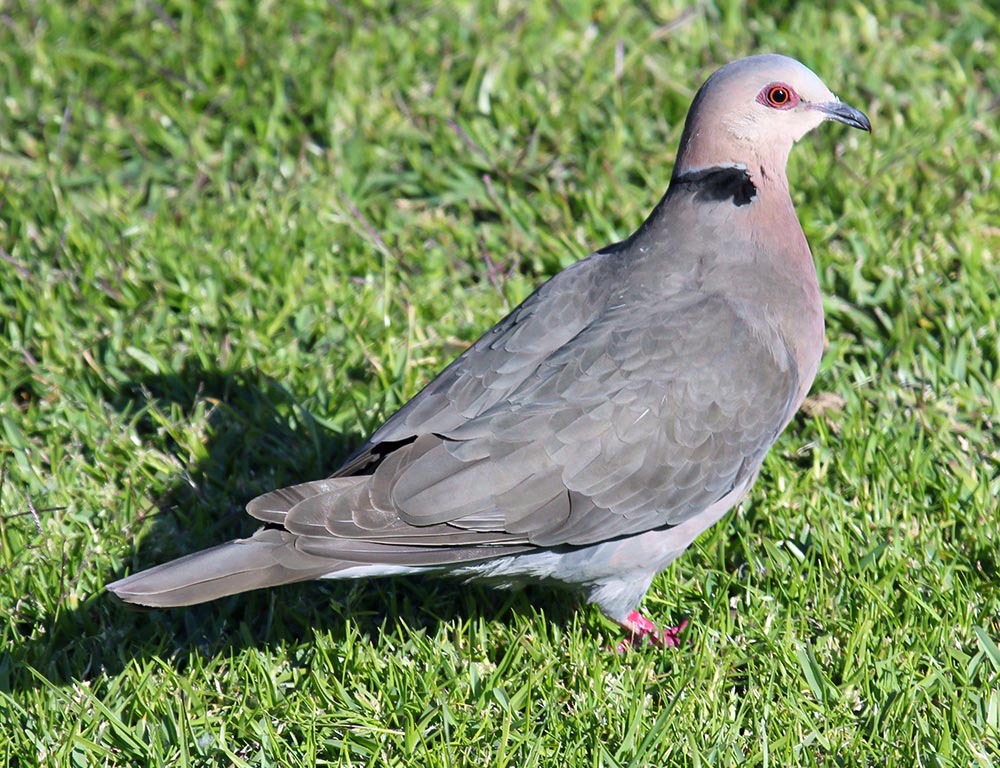
The red-eyed dove is a species of bird that is found in Sub-Saharan Africa. It is considered to be a common species and it is found in many different habitats. It is easily recognizable due to its distinctive red eye.
The IUCN Red List is an international organization that assesses the conservation status of species and determines the degree of risk they face. The red-eyed dove has been listed as Least Concern on the IUCN Red List since 2004.
This means that it is not considered to be threatened and its population is relatively stable. It is a resilient species and has adapted to the changing environment, allowing it to thrive in its range.
Although its population may be in decline in certain areas, overall the species is not considered to be at risk of extinction.
| Kingdom | Animalia |
| Phylum | Chordata |
| Class | Aves |
| Order | Columbiformes |
| Family | Columbidae |
| Genus | Streptopelia |
| Species | S. semitorquata |
19. Jacobin Cuckoo
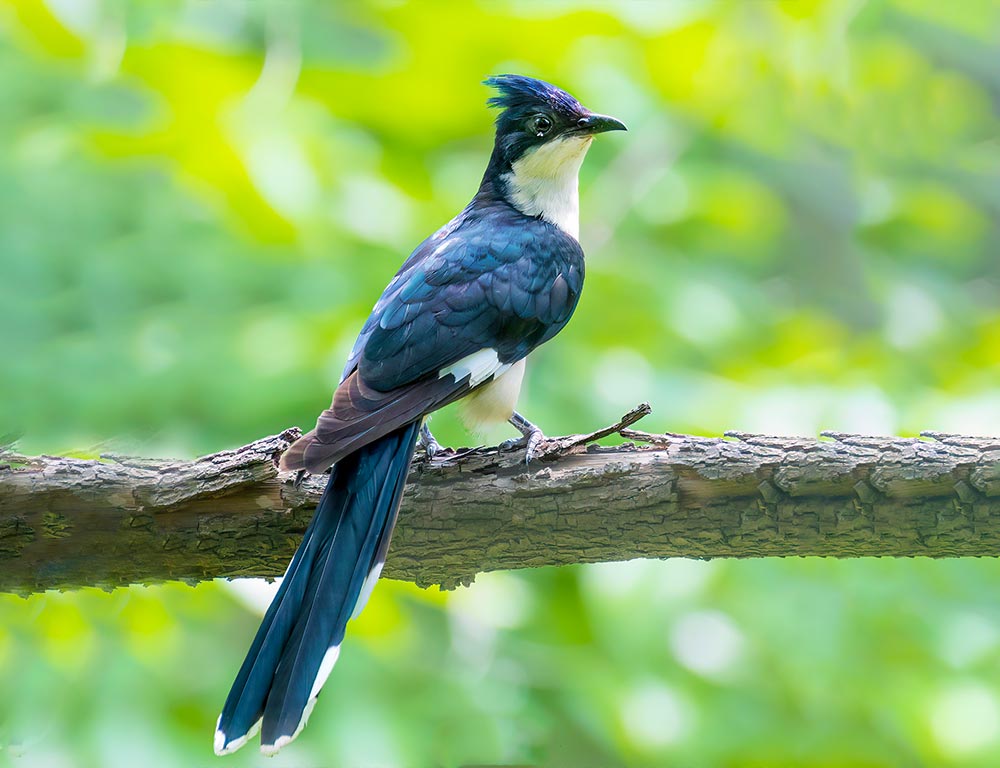
The Jacobin cuckoo is a bird species belonging to the cuckoo order of birds, which is found in both Africa and Asia. It migrates partially, meaning that it only moves its populations between certain areas.
In India, the Jacobin cuckoo is associated with the monsoon rains, as its arrival coincides with the start of the rainy season.
This is why it is also known as the pied cuckoo or pied crested cuckoo. The Jacobin cuckoo is known for its white head and chest, with a black band running from the back of the neck to the tail. It is medium-sized, measuring around 33 cm in length.
Its wingspan is around 50 cm and it has a distinctive call, which can be heard across its range. The Jacobin cuckoo feeds mainly on insects, but it will also eat small reptiles, such as lizards and frogs.
It is usually found in forests and open areas, where it can easily find food. It is also found in grasslands and cultivated fields. The Jacobin cuckoo is known to migrate during the wet season, usually in the months of April to June, when the rains begin.
During this time, it moves to western and central India, where it can find more food. The Jacobin cuckoo is a unique bird species with its own interesting behaviors and characteristics.
It is an important species for the biodiversity of the area and is appreciated for its role in bringing much-needed monsoon rains.
| Kingdom | Animalia |
| Phylum | Chordata |
| Class | Aves |
| Order | Cuculiformes |
| Family | Cuculidae |
| Genus | Clamator |
| Species | C. jacobinus |
20. Arabian Golden Sparrow
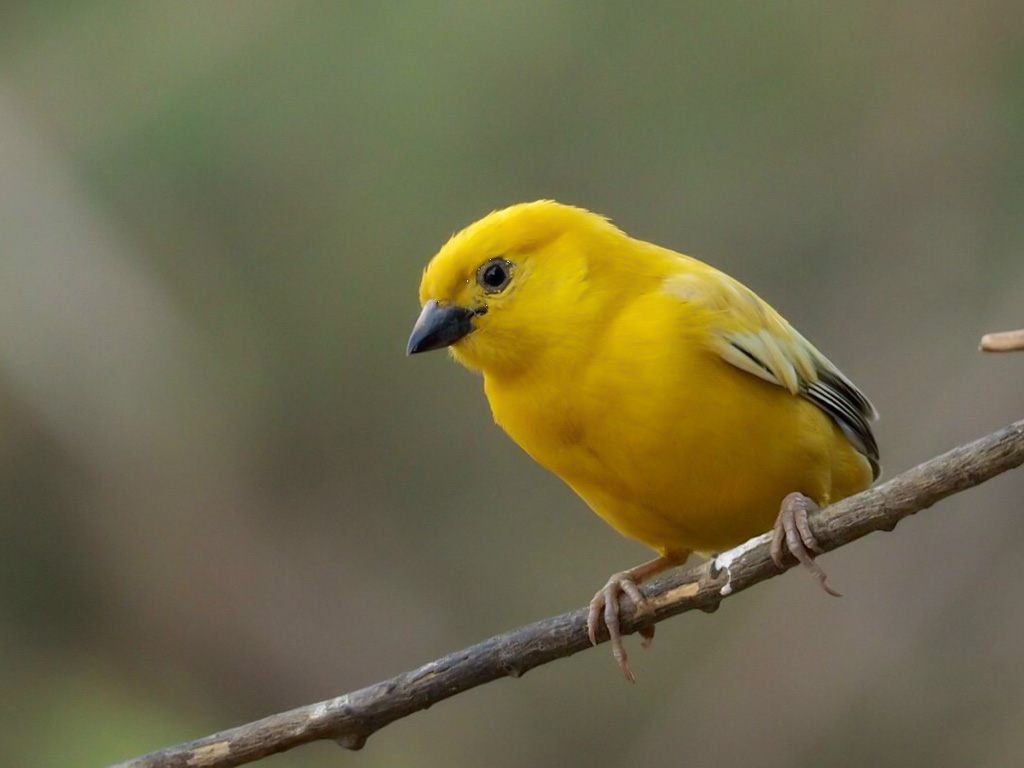
The Arabian golden sparrow is a species of sparrow that is native to southwest Arabia, the coast of Somalia, and Djibouti. This bird inhabits arid, thorny savannahs and scrublands, and is sometimes seen as a subspecies of the Sudan golden sparrow.
With its bright yellow feathers and distinct black markings, the Arabian golden sparrow stands out from its surroundings. It is usually found in small flocks consisting of up to 10 individuals and feeds on seeds, grains, and small insects.
The sparrow is also known for its loud vocalizations, which are used to communicate with its flock members. This species is considered to be of least concern in terms of conservation status, but the destruction of its natural habitats is a threat to its survival.
| Kingdom | Animalia |
| Phylum | Chordata |
| Class | Aves |
| Order | Passeriformes |
| Family | Passeridae |
| Genus | Passer |
| Species | P. euchlorus |
21. White-browed Coucal
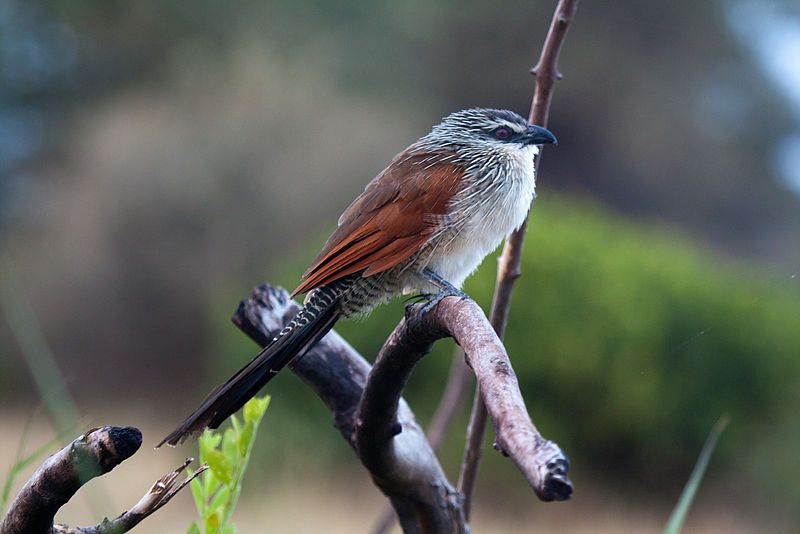
The White-browed Coucal, also known as the Lark-heeled Cuckoo, is a species of cuckoo that is found in sub-Saharan Africa. This bird prefers to inhabit areas with thick vegetation, like rank undergrowth and scrub, as well as coastal regions.
In some cases, Burchell’s Coucal is classified as a subspecies of the White-browed Coucal. This species of cuckoo is a medium-sized bird that is typically dark brown with white or yellowish markings on its head and wings. Its tail is long and pointed, and its beak is curved.
The White-browed Coucal has a loud, cuckoo-like call that it uses to communicate with other birds in its territory. The White-browed Coucal feeds on insects, small reptiles, and even small mammals. They often forage in pairs or small groups, but they can also be found alone.
This species of cuckoo is known to be quite shy and reclusive, preferring to stay hidden in dense vegetation rather than flying out in the open.
The White-browed Coucal is an important species in its natural environment, playing an important role in keeping the insect and small mammal populations under control.
| Kingdom | Animalia |
| Phylum | Chordata |
| Class | Aves |
| Order | Cuculiformes |
| Family | Cuculidae |
| Genus | Centropus |
| Species | C. superciliosus |
22. Broad-billed Sandpiper
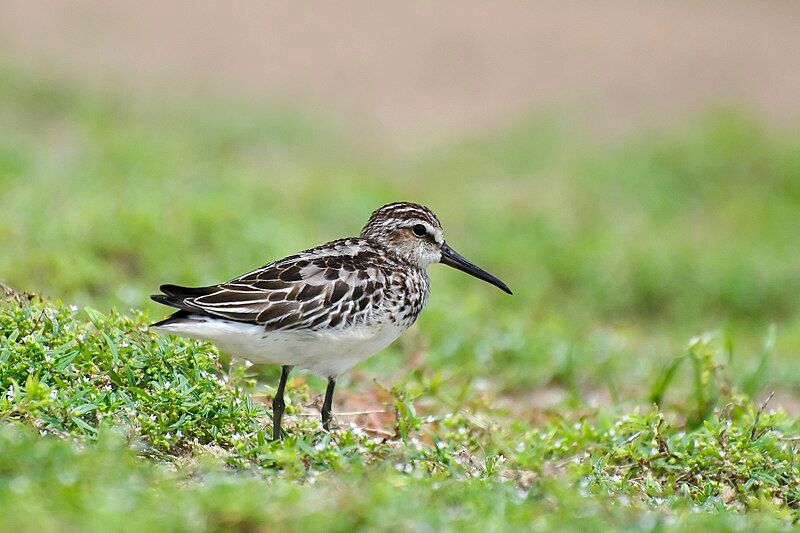
The broad-billed sandpiper is a small wading bird found in different parts of the world. Its scientific name is Calidris falcinella, which is derived from Latin words: ‘Calidris’ meaning ‘beautiful plover’ and ‘falcinella’ which comes from ‘falx’ and ‘falcis’ meaning ‘sickle’.
The bird is primarily identified by its broad bill which resembles a sickle in shape. Research into the species has suggested that it should be classified under the genus Philomachus which is a genus of waders, specifically sandpipers.
This suggests that the broad-billed sandpiper shares some of the features of the genus Philomachus, such as long bill and webbed feet, and thus should be classified under the same genus.
The research also suggests that the bird may have evolved from birds in the genus Philomachus.
| Kingdom | Animalia |
| Phylum | Chordata |
| Class | Aves |
| Order | Charadriiformes |
| Family | Scolopacidae |
| Genus | Calidris |
| Species | C. falcinellus |
Conclusion
Birds in Jizan are a diverse and beautiful part of the natural environment. They provide food, shelter, and beauty for the people of Jizan as well as contributing to the local ecology and economy.
They are an integral part of the natural landscape and should be appreciated and protected for generations to come.